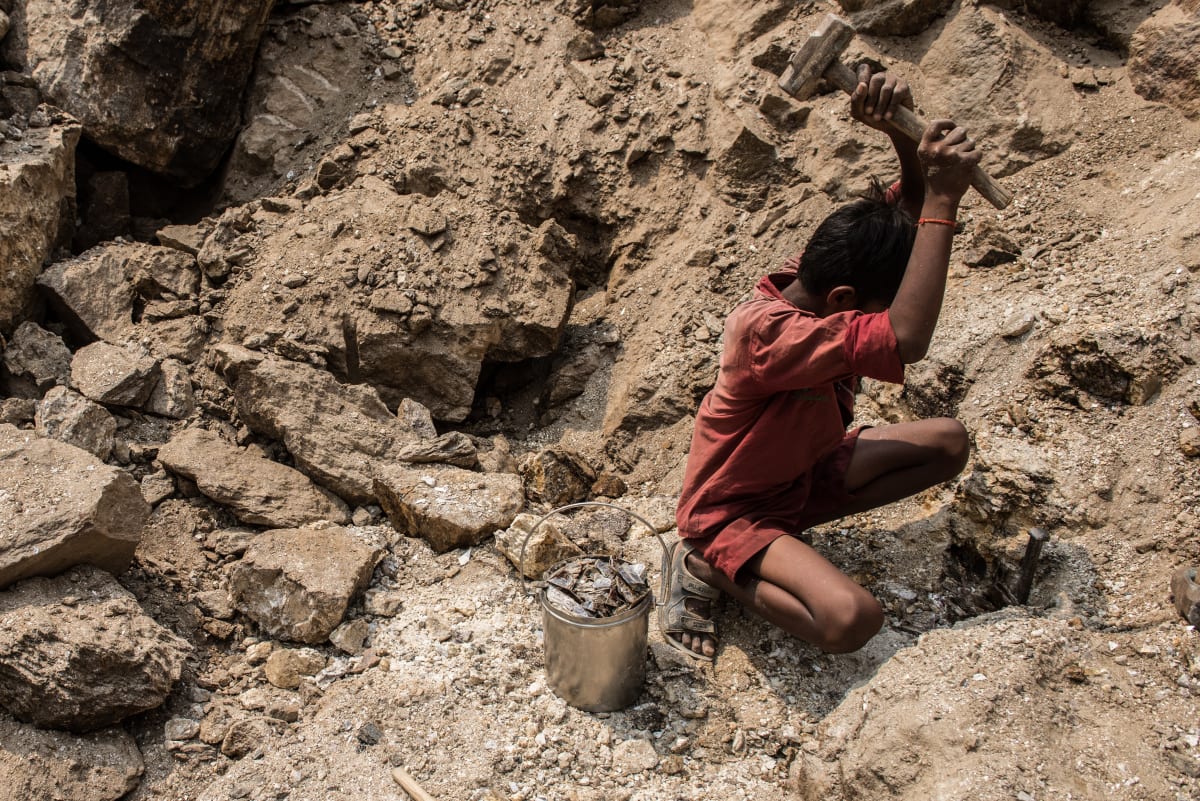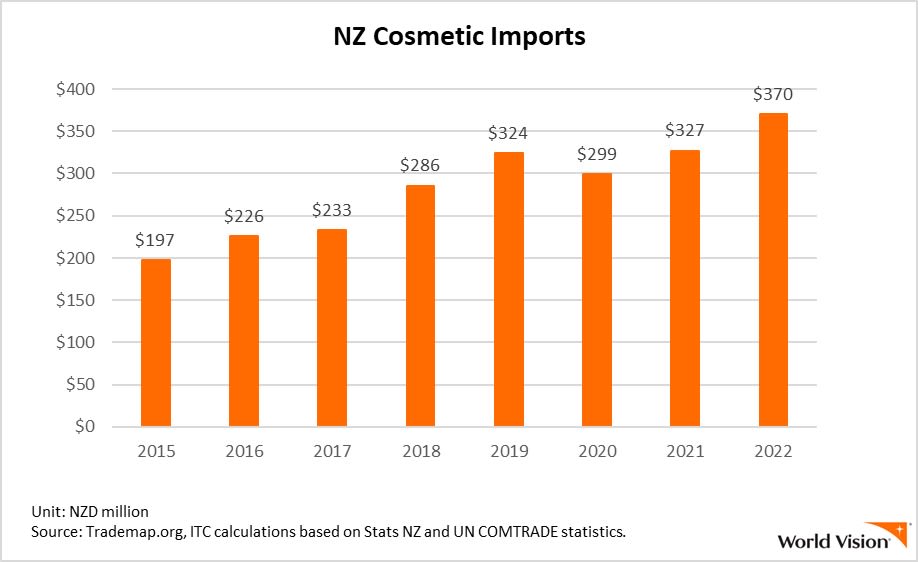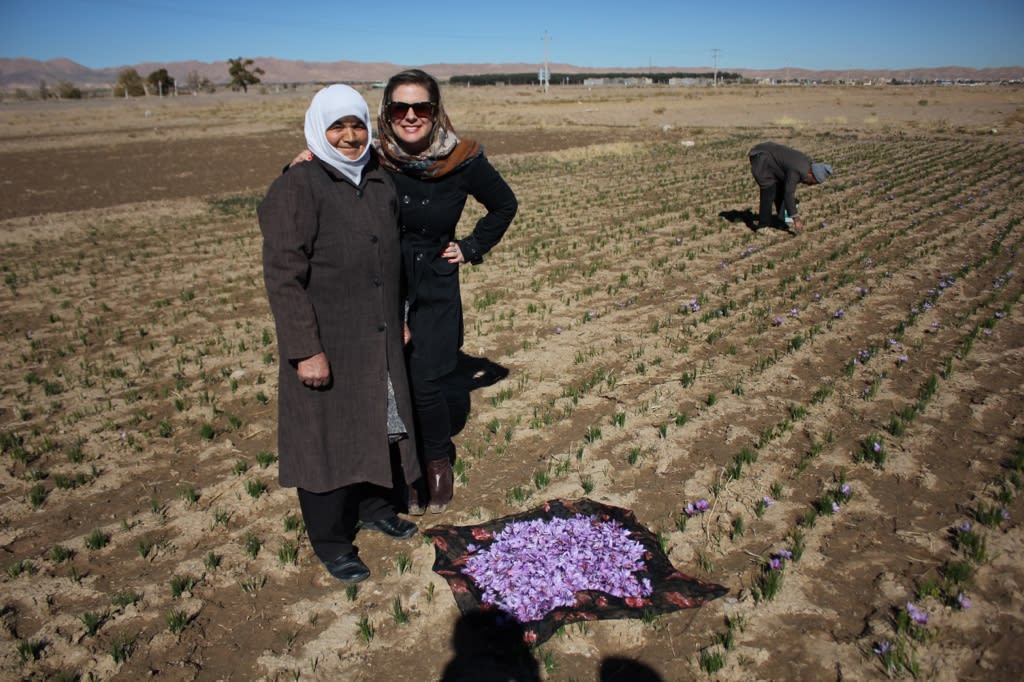
As the Government starts the process towards a Modern Slavery Act, findings from a new report into child labour in the cosmetics industry suggests stronger measures are urgently needed
Two things have happened over the past five days around global labour exploitation. Last Friday our Government announced it was starting work on a supply chain register for big companies in an effort to crack down on modern slavery. Legislation should follow next year, Workplace Relations Minister Carmel Sepuloni said.
Then, on Monday, an international report from World Vision made it clear why eliminating exploitation in our supply chains is so critical.
The high price of beauty: Child labour in global cosmetics is a tough read.
It shows 160 million child labourers (5-17 years old), with numbers expected to reduce only fractionally – to 140 million – by 2025. It shows a growing cosmetics industry projected to be worth $US622 billion by 2028 contributing to the child labour problem through its reliance on ingredients coming from poor countries with lax labour laws, and through companies' failure to ensure their supply chains are clean, and to take action when they aren’t.
READ MORE: * NZ technology to help combat modern slavery * Are your disposable gloves made using forced labour?
The report focuses on six raw materials – cocoa, shea, vanilla, palm oil, copper and mica (the mineral which produces the shimmery finish in cosmetics like lipsticks, nail polishes and blushers) – sourced in countries such as India, Indonesia, Thailand, Malaysia, Ghana, Côte d’Ivoire and Uganda. It also looks at the regulatory landscape in Europe, North America – and New Zealand.
Each section is harrowing, the one on mica is no exception. In just two states in India (where 25 percent of global mica comes from) “more than 22,000 children, some as young as five years old, work in small mines with their family members, who often have no other source of income”, the report says.

Only 10 percent of the mica mines are legal, but “the increasing demand for high quality mica for natural cosmetics, cars and electronics has led to the development of a vast black market for mica from the remaining 90 percent of mines”, the report says.
Child miners face dangers including broken bones and other injuries in accidents, death from exhaustion and heatstroke, and the potentially deadly lung disease silicosis, which is caused by inhaling quartz or silica dust.
“Unless global and national policies are changed, corporate responsibility is increased, and consumers take action, much of the growth of the cosmetics industry could come at the expense or exploitation of children,” the report concludes.
NZ is complicit too
As the chart shows, New Zealand is as hungry for cosmetics as any other country. Apart from a small Covid-related downwards blip in 2020, imports are rising each year. In 2023 they could be around double what they were in 2015.

The World Vision report suggests not only does New Zealand import substantial amounts of cocoa, vanilla, and palm oil from countries with high rates of child labour in these sectors, but its $370 million-worth of cosmetics imports in 2022 make it “ highly probable some of these ingredients were harvested and mined using child labour, considering the countries from which they were sourced and the numerous touch points within globalised supply chains.
“For example, NZ’s top five source countries for cosmetic imports were the US, Australia, France, China and Korea (totalling NZ$246m) — all countries which this report shows are some of the top importers of copper, cocoa, vanilla, palm oil and mica.”
Meanwhile, “the lack of transparency around where these countries are importing their minerals and ingredients, or in many cases finished products, from significantly increases the risk that New Zealand’s imports are tied to child labour.”
It is ironic that while NZ cosmetic and skincare companies are often labelled as ‘cruelty-free’, most do not disclose whether the ingredients they import are free from child labour.
The report contains seven recommendations to the NZ Government and Kiwi companies – the first three of which relate to the importance of introducing modern slavery legislation, the need to include definitions of child labour in that act, and fact supply chain transparency and due diligence should be compulsory features of the legislation.
Tough legislation needed
The final two recommendations are for New Zealand skin care and cosmetics companies and importers.
“Companies should map out their supply chains to examine whether they are importing palm oil, cocoa, vanilla, shea, mica and copper linked to child or forced labour to make their products, or finished products made using these ingredients.
“Where it is likely that they are importing these products, they should set up robust policies and procedures to address and mitigate this including working with suppliers, supplier code of conducts and modern slavery response plans that guide a business response to modern slavery allegations/incidents.”
"It is ironic that while NZ cosmetic and skincare companies are often labelled as ‘cruelty-free’, most do not disclose whether the ingredients they import are free from child labour." – World Vision
Businesses importing cosmetics should work with their suppliers to carry out modern slavery risk assessments and understand whether they are importing products made with slavery, the report says.
Modern Slavery Act
So is the Government’s newly announced supply chain register and planned modern slavery legislation the answer?
It’s certainly a step in the right direction, says Trade Aid chief executive Geoff White, requiring companies with at least $20 million in annual revenue to report on the risks of modern slavery in their supply chains.
But it should go further, he says.
“To make a real difference, reporting is not enough. Trade Aid supports due diligence requirements being a priority of the legislation, and wants to see a time frame commitment to legislation being formally introduced.”

Tearfund's head of advocacy Claire Gray says other countries, including Canada and Australia, have taken the modern slavery approach proposed for NZ "and it has proven to do little to effectively change the situation for those being exploited".
She says she was disappointed by the government's failure to move further. "This is NZ’s chance to get a more robust piece of legislation... It means Kiwis cannot have reasonable confidence that the goods they are buying are not made with exploited labour and that businesses that want to be more ethical are still not competing on a level playing field."
It’s the same message from World Vision’s head of advocacy and justice, Rebekah Armstrong.
“We are very encouraged by this positive step, but the law doesn’t include due diligence, which is the requirement for businesses to take action to reduce the risks of slavery.
“The great news is the Government has committed to addressing this in the future, but it hasn't given a clear timeline.”
World Vision has launched an open letter to Prime Minister Chris Hipkins and Deputy PM Carmel Sepuloni asking for further moves on modern slavery legislation.
“The Government announcement on Friday goes some of the way, but not as far as we would like in terms of addressing child labour and modern slavery,” Armstrong says.
“We’d also encourage consumers to get in touch with their favourite brands to ask what they are doing to identify and address child labour and forced labour. Brands do respond to consumer pressure.”







